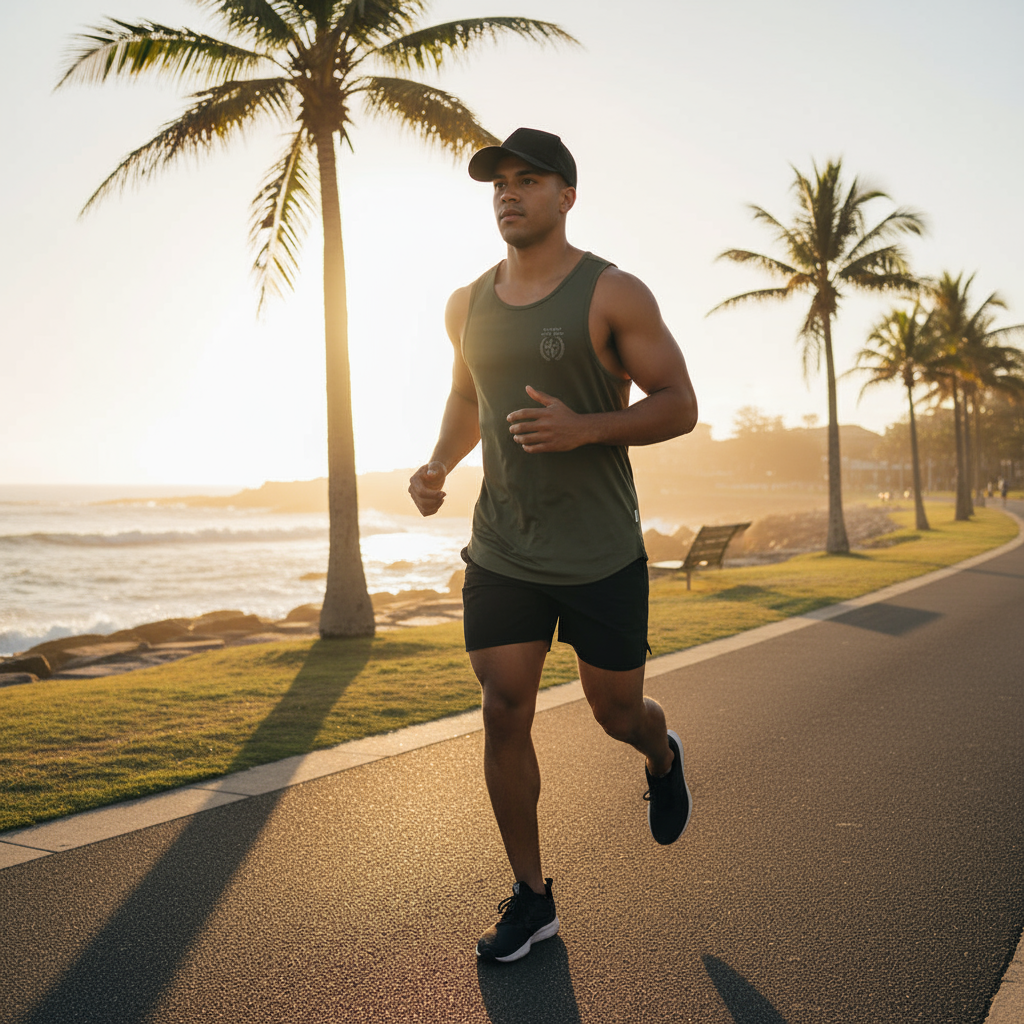Intro
There’s a point in every Sydney summer where training starts to feel like survival. By 8 a.m., the air’s already thick, the pavement radiates heat, and the sweat doesn’t stop. On days like that, every piece of gear matters — especially your shorts.
I’ve gone through plenty of pairs that looked great on the rack but turned into sandpaper halfway through a Manly run. The right pair doesn’t just fit; it disappears. Whether you’re clocking kilometres along the coastal path or pushing through a gym circuit, good shorts should move with you, not against you.
1. Fabric That Breathes — and Moves With You
The best training shorts start with the right fabric. In Australian conditions, lightweight, quick-drying materials are essential. Avoid anything heavy or cotton-based — once it’s wet, it stays wet.
I’ve found that performance blends with spandex or elastane make all the difference. That stretch lets you move freely through squats, lunges, or long strides without restriction.
At Agility, we use IonFlex™ and AeroFlex™ fabrics — both tested through Sydney’s heat and humidity. They’re durable, soft, and dry fast enough that you can train, grab a coffee, and not feel drenched.
2. Length and Cut Matter More Than You Think
Choosing the right short length comes down to how you train.
-
5-inch shorts are perfect for runners who like minimal fabric and maximum airflow.
-
7-inch shorts give a little more coverage and are ideal for gym, HIIT, or cross-training.
Personally, I rotate between both — 5-inch for Manly-to-Freshie runs where airflow matters most, 7-inch for gym sessions where I’m moving through different planes of motion. The key is balance: shorts should move with you, not against you.
Quick Length Guide
-
5-inch: Maximum airflow, minimal coverage — best for running.
-
7-inch: Balanced coverage, versatile — best for gym or cross-training.
3. Lined or Unlined — Know Your Preference
It’s a personal thing. Some athletes prefer lined shorts for comfort and support without compression gear underneath. Others go unlined for more versatility — layering them with separate liners or compression shorts.
If you’re training through Sydney humidity, I lean towards lined — less movement, less chance of chafing. But unlined options are great for recovery sessions or mixing into gym work.
4. Pocket Placement & Practical Details
Nothing ruins a session like a bouncing phone or keys hitting your thigh every step. Good training shorts use zip pocketsor interior mesh sleeves to keep essentials secure and out of the way.
For runners, a rear zip pocket or side media pocket works best — especially when you’re logging longer kilometres. I’ve tested both: rear pockets are great for keys and cards, while a side media pocket keeps your phone accessible without the bounce.
Small details like laser-cut ventilation, bonded seams, and split hems go a long way in comfort and performance.
5. Designed for Australian Conditions
Our summers demand gear that’s built to handle heat, salt, and constant movement. That’s why we test every Agility short across both indoor training and outdoor running before production.
Whether it’s a 30°C track session at Narrabeen or a recovery jog after a swim at Shelly, the goal’s the same — light, breathable, and distraction-free.
Wrap-Up
The right pair of training shorts should almost disappear once you start moving — no friction, no sticking, just focus. If they stay comfortable through a Manly-to-Freshwater loop in February, you’ve found a keeper.
Every Agility short is tested through Sydney summers before it goes into production — from beach runs to indoor HIIT sessions.
👉 Explore training shorts built for Australian conditions: https://agility.fit/collections/shorts
